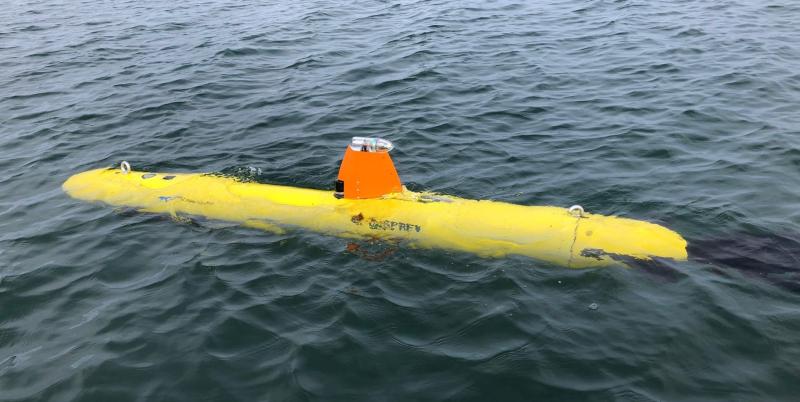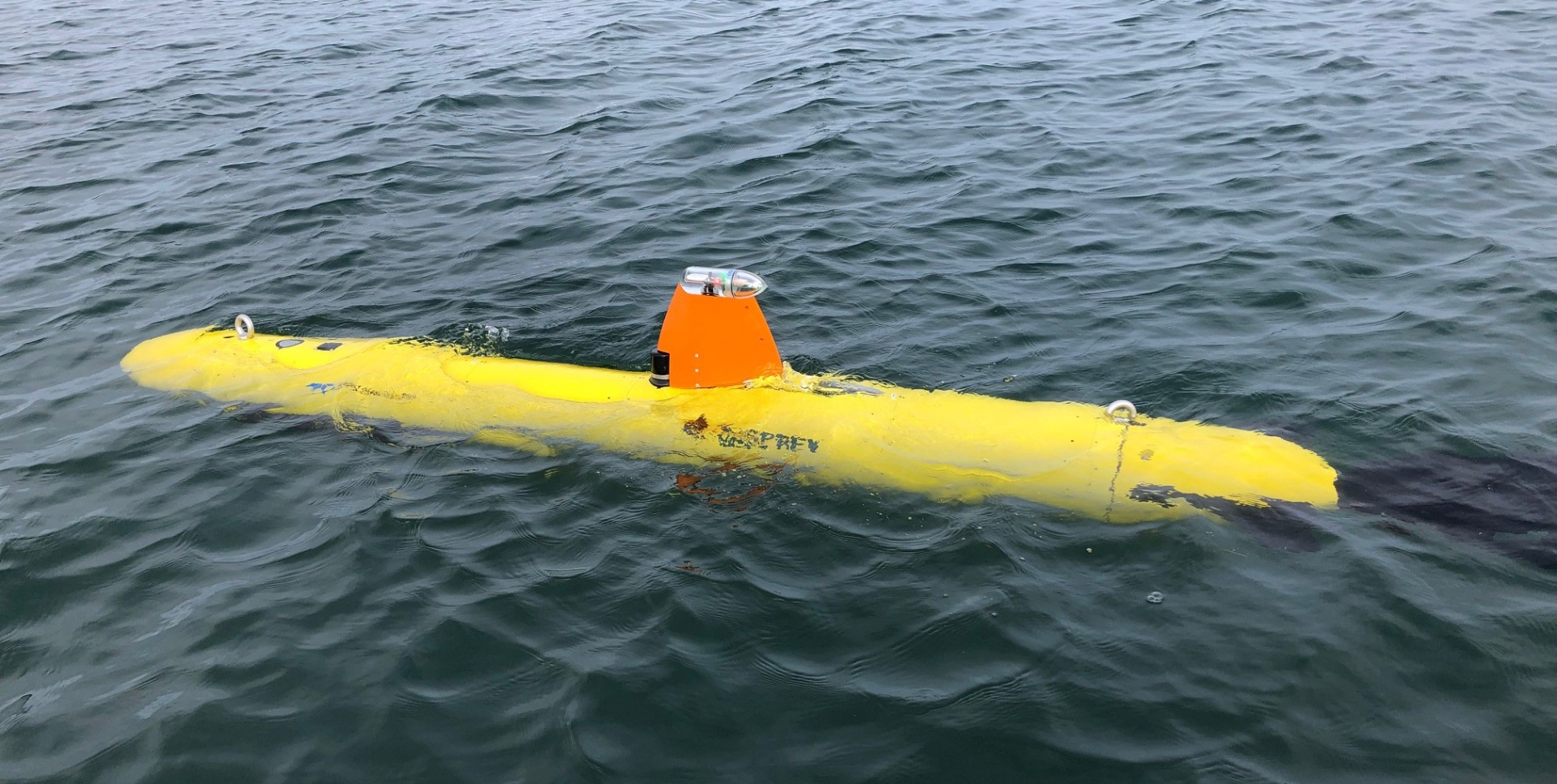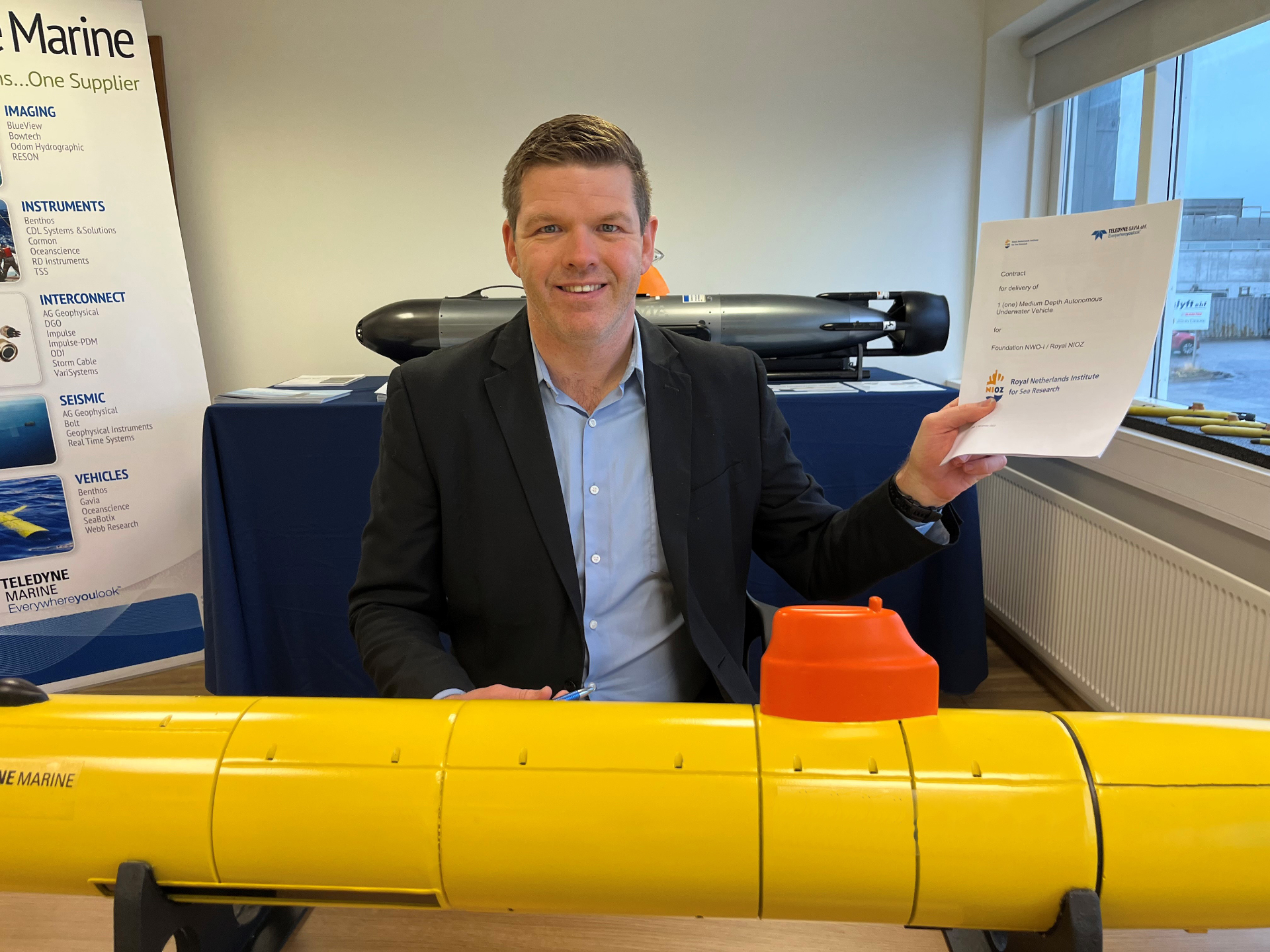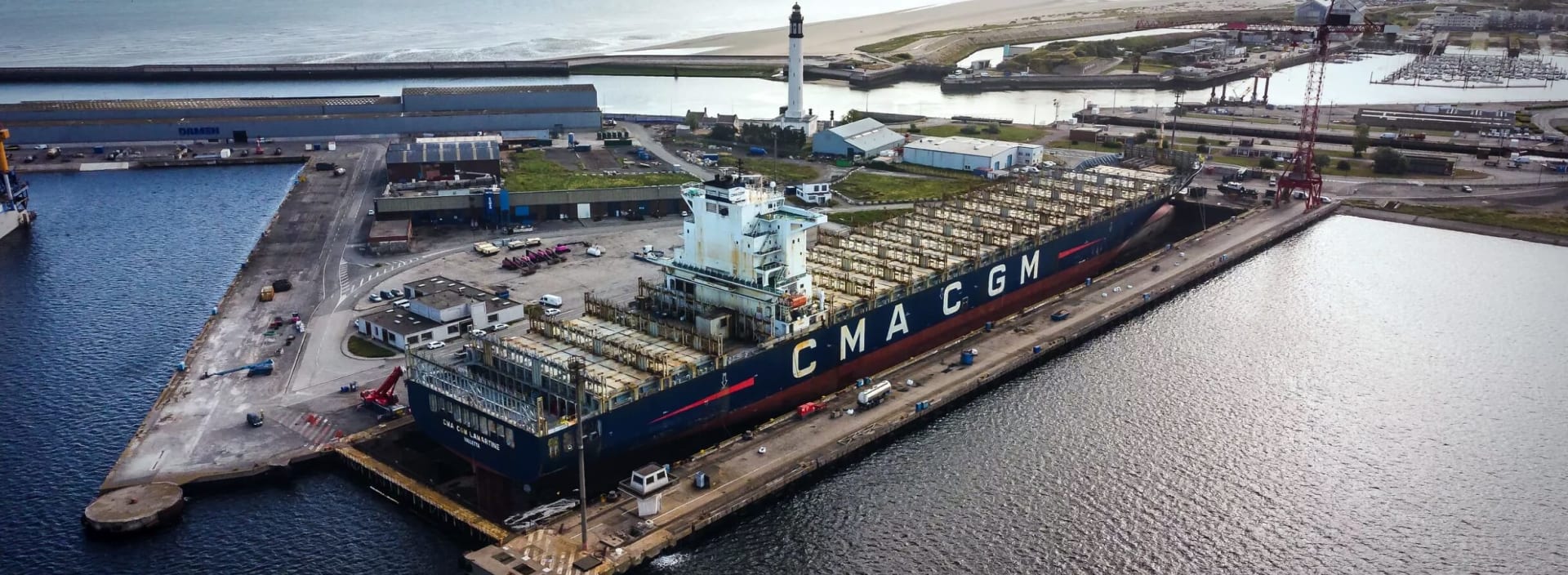New modular AUV for Dutch marine research community

This week, the contract has been signed for the manufacturing of an autonomous underwater vehicle. After delivery in 2024, the AUV will greatly enhance Dutch scientific research in oceans and on the sea floor. The device can be deployed autonomous and flexibly for precise measurements and high-resolution visualisation. Funding was obtained by a national consortium and the innovative research equipment provided the first steps towards the overall renewal of the Dutch research fleet.

Osprey in the water. Photo: Teledyne Marine
Acquisition of the Autonomous Underwater Vehicle (AUV) is funded through a grant from the NWO Large-scale Scientific Infrastructure (NWO-GWI), awarded in 2020 to a broad nationwide marine research consortium of universities, institutes and TO2 institutions. Project leader Gert-Jan Reichart: "This is step 2 in a series of research equipment renewals. Step 1 was the purchase of new gliders, which will soon see their first deployments. For step 3 will start soon looking at a full ocean depth remotely operated vehicle, an ROV."
Unique modular system
The new AUV will be built by the Icelandic company Teledyne Gavia, which stands out for its modular design and construction of these types of vehicles. After a tendering process, a medium-sized AUV of the Osprey model was selected. This vehicle has a depth range of 2,000 meters, can operate underwater for 24 hours at a time and can be equipped with modules that hold a variety of sensors.
Project manager Marck Smit welcomes the collaboration with Teledyne Gavia. "This company was chosen after surveying the specifications with the marine research community. Teledyne is a company with scientific origins that has grown on and built up a lot of expertise over 25 years. Their modular system is unique.
Teledyne director Stefan Reynisson says: "The modules we work with allow a scientist to put together the vehicle he or she needs at that moment at sea. One can add modules that contain O2, CO2 and CTD sensors as required and take velocity measurements. Next to that, the modules allow you to replace batteries quickly for a rapid turnaround of the system and get it back in the water very quickly after retrieval, and also to upgrade the device at a later stage without the need for a whole new vehicle."
Accurate imaging and navigation
The Osprey comes with equipment for accurate mapping of the ocean floor. Reynisson: "There is a multi-beam sonar system. It has up to 1024 beams that make it possible to create a three-dimensional map in high resolution. There is also a side scan that creates high resolution imagery of the seabed."
In addition, the Osprey has forward looking obstacle avoidance sonar, an acoustic modem and an internal navigation system. "This enables accurate navigation and identification of underwater objects, allowing you to reprogramme missions while the device remains underwater," Reynisson said.

Teledyne Gavia General Manager Stefán Reynisson signs the contract. Photo: Teledyne

